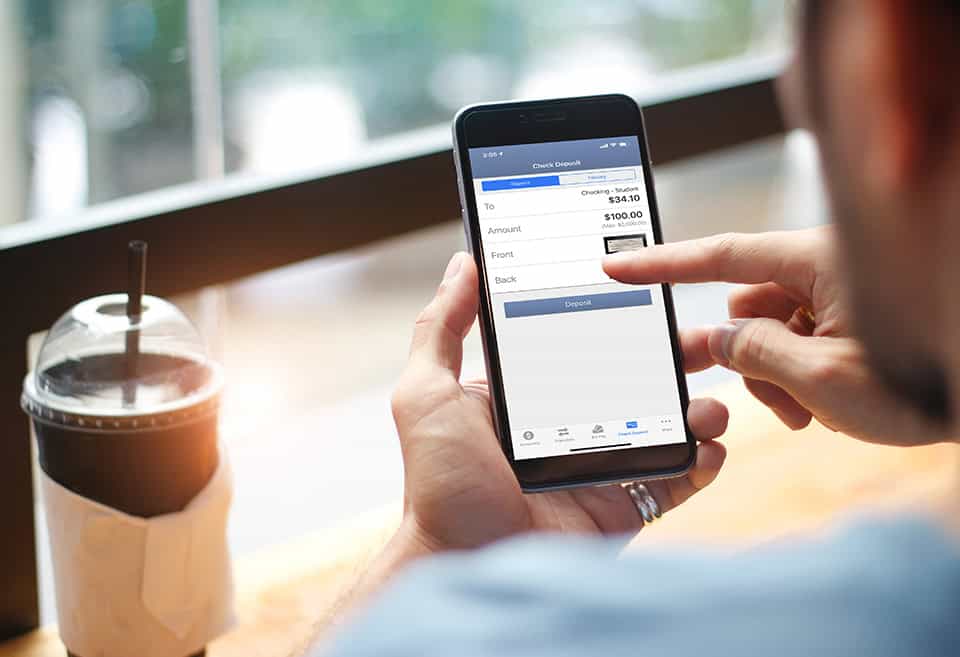Happy (Financial) Independence Day!

Our country’s Independence Day always gets us excited, because it also gets us thinking about all the ways we help members achieve financial independence! For some, that means getting out of debt and relieving anxiety about daily expenses. For others, it’s having confidence in a secure retirement. Whatever financial independence means to you, we’re here with sensible tips anyone can employ to get there faster.
-
Set realistic short-term and long-term goals.
First off, you’ll want to think through what you want to achieve financially and to ensure those goals are specific and measurable. For example, a desire to be rich is not a goal, but a desire to have $500,000 saved in twenty years’ time for retirement is. And segment those goals with time frames – short-term would be less than a year, mid-term is 1-5 years, and long-term is anything five or more years into the future.
Then, determine how much you need to set aside each month by dividing the cost of the goal by the number of months until your desired achievement date. This is, of course, where the magic of compound dividentds can make an appearance – check out the calculators on our website and scroll down to Savings and select The Benefits of Compounding option – trust us, you’ll love it! You can plug in any scenario you like and see how it plays out.
-
Get clear about needs vs. wants.
We put this tip second, because we’re believers in starting any project with your goals in mind. But, really, being able to differentiate between needs and wants is the absolute key to financial independence.
Many of us have a tendency to engage in “lifestyle creep” which is when we allow our expenses to grow each time we get a raise or bonus or new job that pays a bit more. However, it’s actually the ability to live below your means that will enable you to achieve financial independence – even if you don’t make a ginormous salary.
At its heart, what we’re talking about is delaying immediate gratification in order to achieve more important goals in the future. For those of us to whom saving doesn’t come naturally – and that’s a whole bunch of us – visualizing our savings goals can be extremely helpful for convincing us to delay gratification.
-
Create a spending plan, aka a budget.
With a spending plan, the most important thing is that it’s balanced – where your expenses don’t exceed your income. If you’re spending more than you’re earning, you obviously can’t put money aside. So, if you’re like a lot of people and have never actually put together a personal budget, this is the time to do it. Basically, you need to be able to account for every dollar, and the ideal is to learn to live below your means so you have some budget breathing room.
If your expenses exceed your income, you know what you’ve got to do – increase your income and/or reduce your expenses. It’s on the reduce expenses side that being clear about needs versus wants really comes into play.
-
Decide on a debt paydown strategy.
Super-size credit card debt is one of the biggest barriers keeping many people from achieving financial independence. Since the finance charges on many cards can be enormous, simply paying the minimum monthly payment isn’t going to cut it. There are different strategies that work and are motivating for different people, so pick one that works for you. Here are a couple of common strategies:
— If you have multiple accounts, paying off those with small balances first can be satisfying and provide motivation to tackle the bigger challenges.
— Another option is to pick the account with the highest finance rate and focus on aggressively paying that one down, then moving on to the account with the next highest finance rate, and so on.
-
Build a right-sized emergency fund.
A lot of Americans live paycheck-to-paycheck, which puts their financial lives at great risk. In fact, Bankrate’s annual emergency savings report for 2023 showed that just 43% would have the funds saved up to cover a $1,000 expense for an emergency room visit or car repair. So, at the same time you’re paying down debt, it’s important to set some cash aside to build an emergency fund. If you’re single with no kids, 3-6 months of living expenses may be sufficient. If you’re the breadwinner supporting a family, you’d probably be more comfortable with a bigger cushion of 6-12 months.
-
Evaluate your insurance needs.
Remember, few of us will be able to build an emergency fund large enough to cover catastrophic events, like a major car accident or house fire, which can wipe out your savings. That’s why having the proper amount of insurance is extremely important – especially if you’re a single parent or the primary earner for your family. Most people have car insurance, and perhaps homeowners’ insurance, but take stock of your life and think about whether you might also need life insurance or disability insurance.
-
Open the right accounts for different financial goals.
We’re big fans of any account that, well, gets you saving! But we also want your money to work as hard as you do, so be sure to choose the account types that make most sense for what that money is earmarked to cover.
For an emergency fund or other short-term goal like a car down payment, a basic savings account or Money Market account is a good choice because you’ll have easy and immediate access to the money when you need it, but it will be separated from your day-to-day spending.
If you’re saving up for a child’s education, it’s smart to look into a 529 savings plan, while an Individual Retirement Account (IRA) offers tax benefits to make retirement saving more attractive.
-
Adjust when needed, but stick with it over the long haul.
Saving and the habits that lead to financial independence take practice, so be patient with yourself and keep those long-term goals in mind to stay motivated. As your life circumstances change (think: marriage, starting a family, buying a home), it’ll make sense to tweak your financial goals, but these same basic tips will still apply.
Want more info?
Check out our full range of free financial wellness resources for lots more tips on how to reach peak financial freedom.
Must meet membership and account criteria. Information and interactive calculators are made available to you as self-help tools for your independent use. They are not intended to provide financial or investment advice and may not be applicable to your specific circumstances. All examples are hypothetical and are for illustrative purposes.





